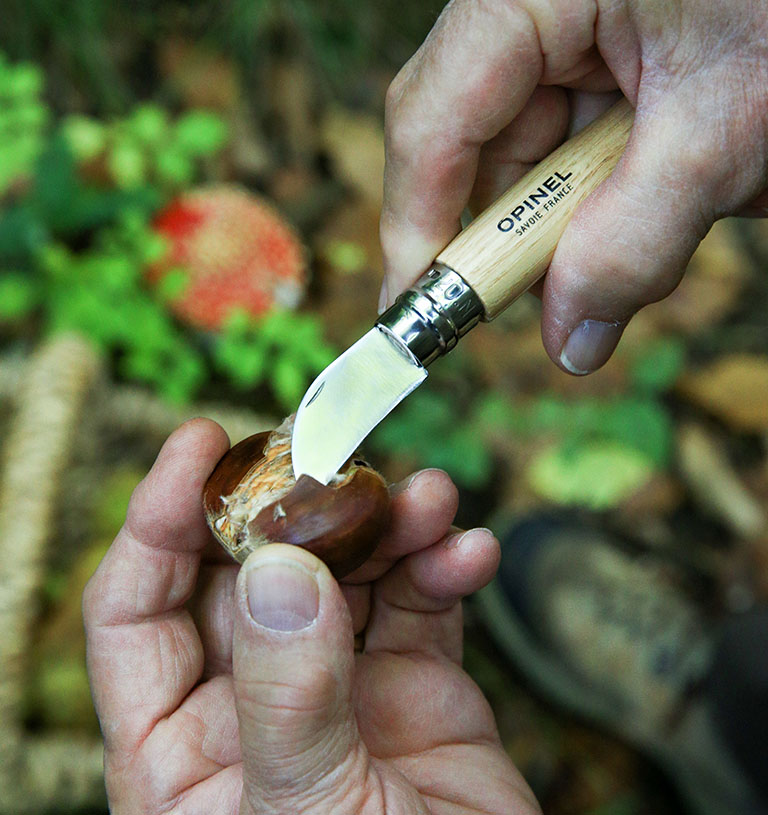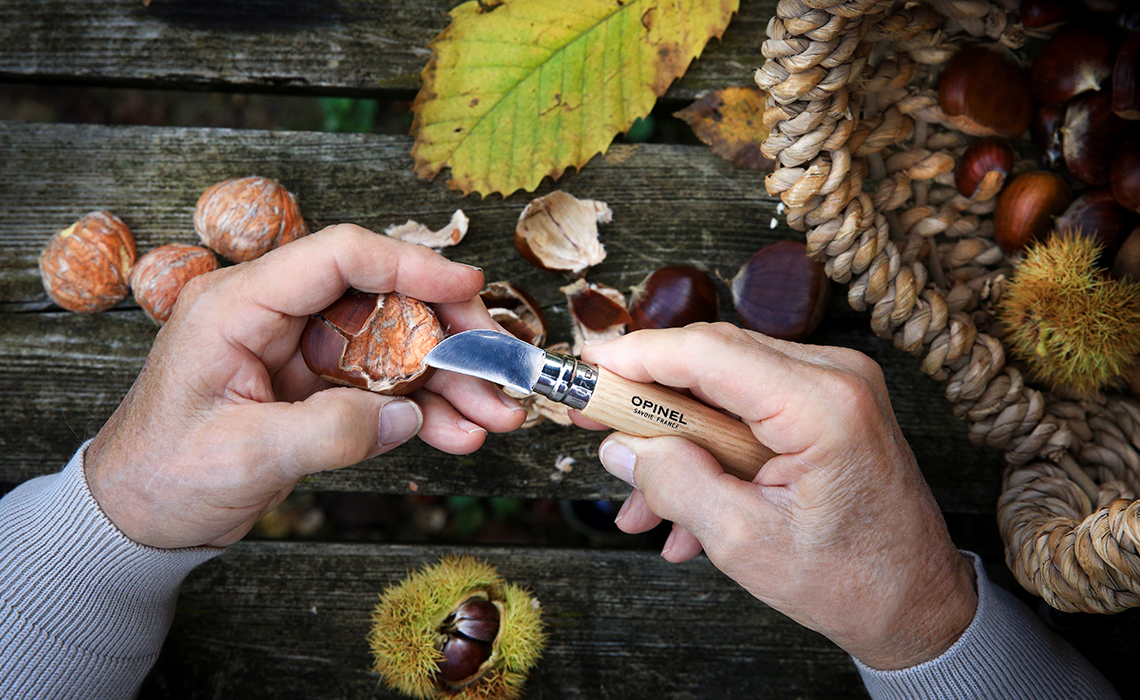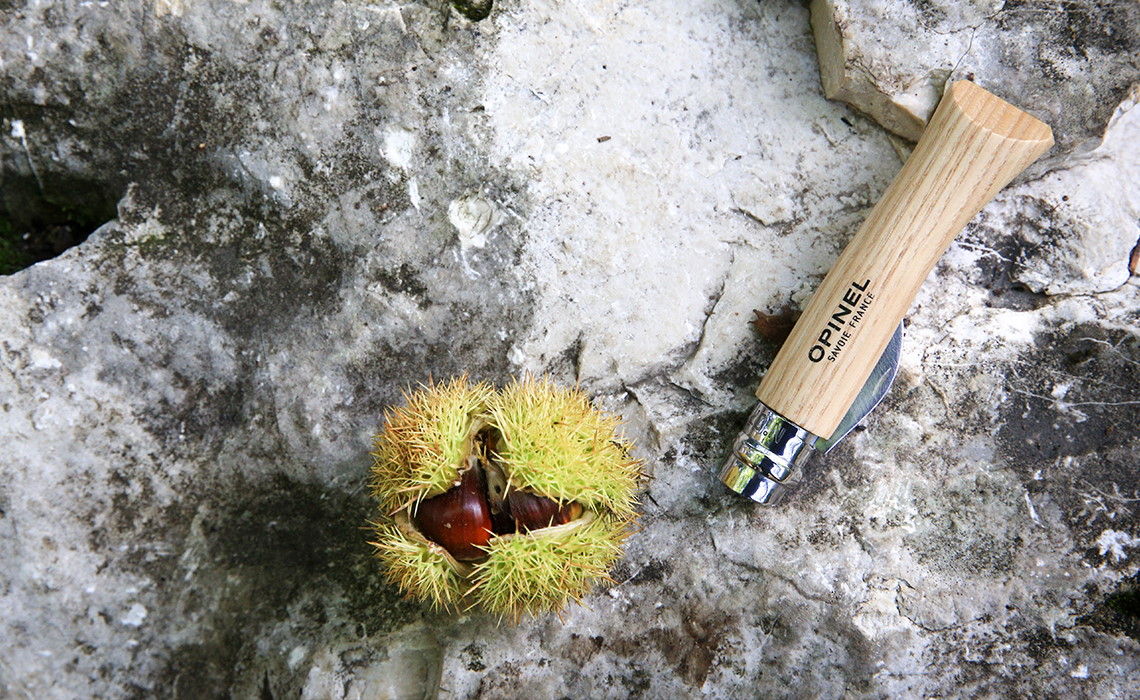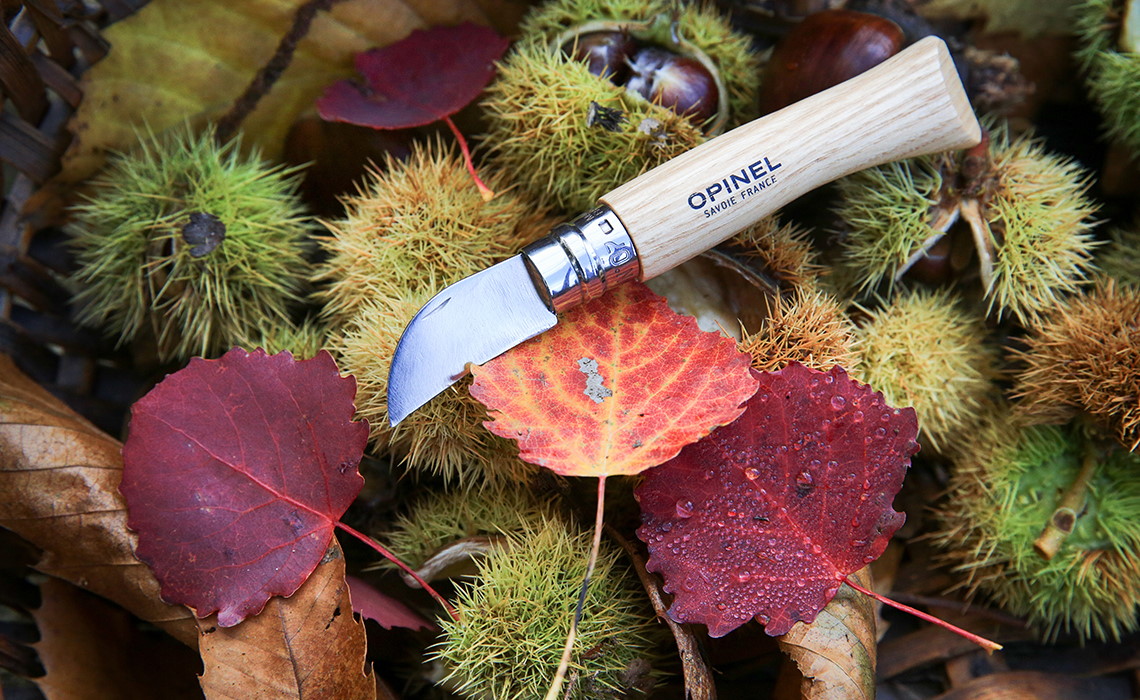Your cart is empty
Are you sure you want to perform this action?
Free delivery from 69€* read more
Your cart is empty
Multifonction
Limited edition
By use
Barbecue Set
Three utensils made in France using environmentally friendly materials: the No. 12 B knife with a bottle opener, the Spatula +, which attaches to the handle of the knife, and XL Tongs.
Collections
Pop 80 Les Essentiels Set
Colourful handles and four small blades that are kitchen essentials: the paring knife, serrated knife, vegetable knife and peeler.
Collections
By product type
Facette Mixed Set
Knives that combine comfort, efficacy and aesthetics, with four different handles: ash, dark ash, olive and VittEr® eco-material.
By product type
Le Petit Chef Green Set
A small chef's knife, a peeler and a finger guard: the essentials for passing on the love of cooking to children.
By product type
Scabbard
The made in France case to carry the No. 06, No. 07 and No. 08 pocket knives, as well as Effilé folding knives 8 and 10.
Need help
Considered as an autumn fruit, the sweet chestnut rarely weighs more than 25 grams. Despite its small size and weight, it provides a lot of energy. There are lots of different varieties such as Marigoule, Bouche de Bétizac and Bouche Rouge. Sweet chestnuts, which are fruit trees, are sometimes called the "bread tree", since chestnuts used to be eaten as a meal by the more impoverished. Times have changed, since nowadays this fruit often appears on the table on special occasions.
We often get sweet chestnuts confused with chestnuts. For example, we usually refer to chestnut purée, chestnut-stuffed turkey and roast chestnuts. But none of these are the conker-style chestnuts, they're all sweet chestnuts! Conkers can't be eaten, and while they look like sweet chestnuts, there are differences between them. Firstly, a sweet chestnut case has a lot more spikes than a conker case. Sweet chestnuts are also flatter than big, round conkers. Last but not least, there's usually just one fruit inside a conker case, whereas there are three in every sweet chestnut case.
So now you know how to tell the difference!

Chestnut trees flower in summer, mostly at the beginning of June up until the end of July. Then the sweet chestnuts fall, and that's when you can collect them. You shouldn't take chestnuts straight from the tree, you should wait till they're on the ground. You collect them in autumn, at the end of September to mid November. This is why sweet chestnuts are known as "autumn fruit", because you'll enjoy them with all your meals for the rest of the season and even in winter.
Don't forget to put on gloves to protect your hands, the cases are very spiky!
Sweet chestnuts grow in rich, healthy soil without much lime. They don't like drought and they need light. This means, although you can find sweet chestnuts in the woods near you, they are most plentiful in the Ardèche, in the Cévennes, and also in Limousin or in Corsica.
And you can buy them of course!

It's important to choose the right sweet chestnut when you're collecting them or buying them at the supermarket. Check they're glossy, not too damaged and that none have any holes. Once you're at home, put them in water to check that all your chestnuts are healthy and edible. The ones that bob back to the surface are probably empty or not edible.
You should definitely try sweet chestnuts if you haven't already! In fact, this fruit contains lots of vitamins and carbohydrates and very little fat. They're very good for your health and give you lots of energy.
There are several ways to cook sweet chestnuts. If you want to boil them, you just need to make an incision in the lanula (the lightest bit) so the chestnuts don't explode, and then pop then in boiling water for about 10 minutes. Afterwards, you can just remove the shell and the thin peel.
You can also pop them in the microwave for around a minute. Make sure you don't leave them in for too long.
You can also roast sweet chestnuts in the oven, for which you'll still need to slit the lanula. Arrange them on a baking tray and roast them at 210°C for around 20 minutes.
If you've got an open fire or woodburner and a chestnut pan (with holes in), you can roast your sweet chestnuts on a wood fire. Slit the lanula, arrange the sweet chestnuts in the pan and roast them for 20 minutes.
You can also use sweet chestnuts in savoury or sweet dishes. Who doesn't like a lovely chestnut broth, chestnut pâté, chestnut purée or even an apple and chopped chestnut crumble?



Are you sure you want to perform this action?
Hello,
We think you are in North America.
Get the best experience and visit opinel-usa.com
Hello,
We think you are in Australia.
Get the best experience and visit opinel.com.au
Hello,
We think you are in Japan.
Get the best experience and visit opinel.jp
Hello,
We think you are in New Zealand.
Get the best experience and visit opinel.co.nz
Hello,
We think you are in Singapore.
Get the best experience and visit opinel.sg
Treat your loved ones or yourself to a unique and original personalised knife. You can engrave a first name, a date or any other message on one line of text, up to a limit of 20 characters.
The engraving service is offered from one unit, starting at €6.
If you would like to order more than a hundred units for a wedding, an association or business gifts: request a quote.
Differences in the colour of the engraving on the handle may appear depending on the grain of the wood. In accordance with Article L-121-20-2 No. 3 of the Consumer Code, engraved items can neither be returned nor exchanged. The guarantee on manufacturing defects remains the same.
Engraving examples








Need some help for your engraving ?
Contact us by phone (+33 4 58 25 01 16) or using the form on our contact page
